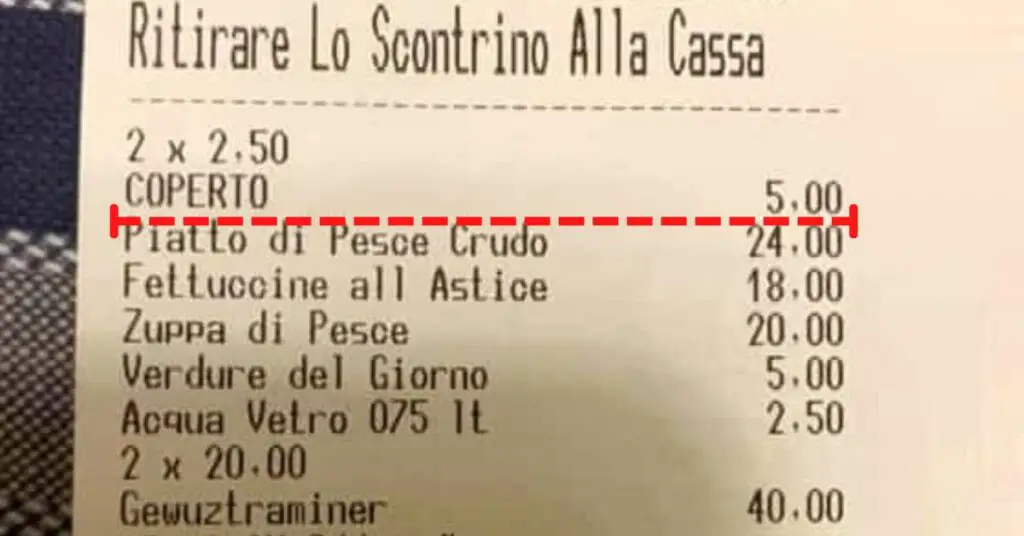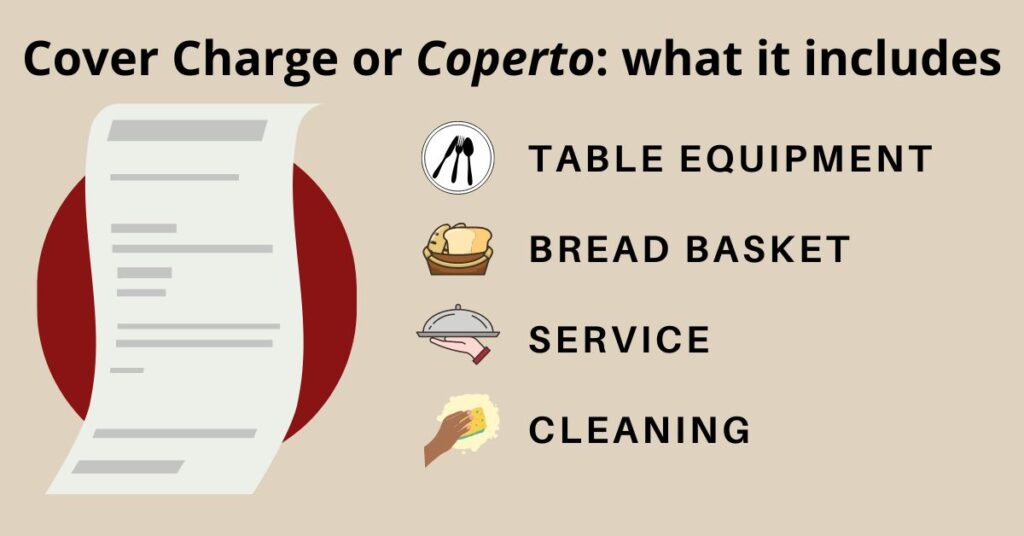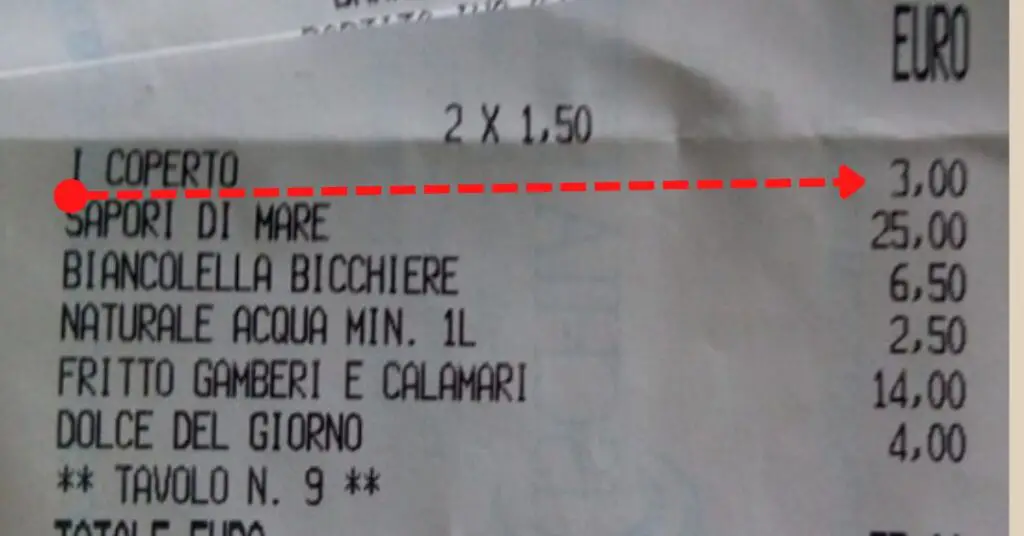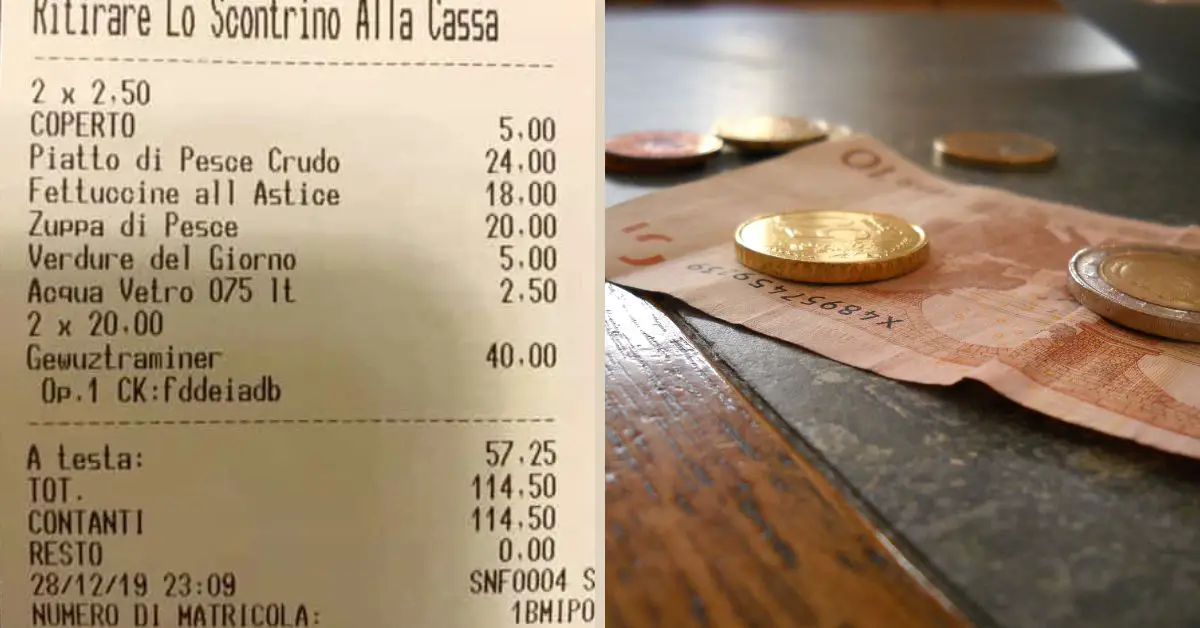If you have just eaten at an Italian restaurant and you had an additional cost to the courses called “coperto” on your receipt, in this article I want to explain to you what it is and why you have no reason to be alarmed.
The term coperto means “cover charge” and, in fact, it refers to everything that is present on the table when you sit down: it includes the work of the restaurant to set and clear the table, by offering guests tablecloths, plates, glasses and clean cutlery. In this small “fee”, it is included also the bread basket and, in some cases, some complimentary appetizers offered by the house.

Although the items that fall under the cost of the cover charge may vary from restaurant to restaurant, in general these are the main ones:
- table equipment
- bread basket
- service
- cleaning

Moreover, we have to say that even the location plays its part: normally, the cover charge is symbolically explained in a very cheap amount of around €1 per person but, when the place is located in a very exclusive venue, it is considered luxurious and/or it can offer a beautiful sea view or a terrace overlooking a spectacular panorama, for this reason, the amount can go up €5 per person.
It may seem like an exaggeration or something anachronistic: you should know that in countries where the cover charge is not used, these costs are squarely diluted in the prices present on the menu. You simply do not perceive them in a direct way. However, you have to pay attention because this concept of coperto should not be confused with the tip’s one.
Italian cover charge and tip, here is the difference

When a waiter is always attuned to your needs, he can fulfill your wishes and acts as an excellent intermediator between your order, the hands in the kitchen and those clapping at the cash register…will you agree with me that he deserves a very good tip, right?
This is the difference between the cover charge and the tip: the first (coperto), in Italy, is always expected because a table is cleaned, set and cleared; on the other hand, the good work of a waiter is not (unfortunately) always taken for granted and it can be valued in a proportional way, with a tip.
Actually, in Italy, there are no compulsory “tips” equivalent to a certain percentage of the order, as it occurs in other countries. On the contrary, a disappointed customer can even leave the place without giving a tip to those who served him, sending an unequivocal signal to the staff. I have always thought that the compulsory tips’ issue expected abroad was quite unfair, because it does not sink its roots in meritocracy; however, I realize now that it might be the same with Italian cover charge!
The cover charge is compulsory, do not try to negotiate it
In short, in Italy tip is optional, but the cover charge is mandatory.
This means that you will always find it on your receipt – it is usually the first or last item on it – and you could not avoid it, because it is considered a part of the service that the restaurant offered to you.
However, what you can do is check the cost “coperto” on the menu (which must be written by law and you can also find it under the service item) and, in the case in which you did not find it, you can always ask the waiters in the dining room for elucidations.
Even if you find yourself in a place that declares to have “abolished” the cover charge (there are very few places in Italy with this behavior, as the restaurant located in Ravenna), its equivalent is simply foreseen in the pricing list that you will find in front of you, exactly as occurs in other countries where this very cheap amount is not compulsory.
A dispassionate advice for the more informal: many pubs and bars allow the consumption at the counter instead of at the table. If that is the case, the cover charge will not be calculated!
The historical origins of the cover charge in Italy
The practice of including the cover charge in our menus comes from very remote times and, as often happens, from the most deprived social classes’ habits.
During the Middle Ages, in fact, the hostelries were the only places in the area where travelers could take shelter to eat a dry, warm meal: basically, the hostelry provided crockery and places to people who brought food from home or from the street. That is why this small fee was calculated for “staying indoors”.
It will be natural to wonder how things were handled, instead, with those who decided to stay in the hostelries by ordering food: it seems that, in those cases, the cover charge was not requested. That explains why today not everyone greets the fact that it is claimed by default. After all, who among us books a restaurant to eat food brought from home?!
In an intermediate age, after the Middle Age but before our times, the service was used also to pay waiters when this working category did not have access to regular contracts and built its own compensation as a percentage.
We have to say that the concept of cover charge has evolved, acquiring its “modern” meaning: its “quantization”, as I mentioned previously, is able to speak about the prestige or spartan nature of the place in which we go to feed ourselves.
Who knows, maybe one day it will be abolished also in Italy, as many consumer associations wish.


![Do Italians eat Sushi? [strange but true]](https://whyitalians.com/wp-content/uploads/2022/12/sushi-rolls-and-udon-noodles-768x402.jpg)




